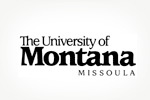Achievement
Diversity estimates for complex microbial communities
Research Achievements
Diversity estimates for complex microbial communities
Usual methods of sampling and analyzing ribosomal gene DNA sequences of complex microbial communities have biases that impede assessing the community’s true phylogenetic diversity. Trainee Ted Cosart collaborated with M-EID faculty Bill Holben and Jesse Johnson, and postdoctoral fellow Sergio Morales to test the effects of alternative methods on diversity estimates for complex microbial communities. They identified techniques that improve detection of community diversity: Community DNA fractionation based on nucleotide composition increases detection of minority populations; increased sample size from the typical 500 to several thousand sequences; and development and use of novel taxonomic computational tools for sequence classification. Applications in disease ecology include a more complete exploration of the complex microbial community that lives in the distal human gut and its intimate role in health and disease (Morales et al, 2008 and 2009 and Morales and Holben 2009).
- “Research Achievements”
- Achievements for this Project






